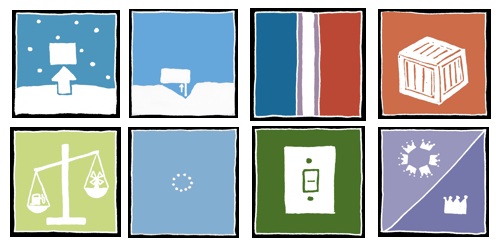
A key problem that had to be dealt with in the design of the Fram and the South Pole Station, was isolation. Because of the setting of both environments, and the limited contact with the outside world (even more so in the Fram) tension as well as symptoms such as depression are inevitable results.
Some general solutions for communities in isolated communities include; developing a strong sense of community, incorporating elements of a normal lifestyle, ensuring candidates are fit to be exposed to the situation, and other preventative measures.
It is evident that both structures and programs have incorporated such elements into their designs.
For the Amundsen-Scott South Pole Station, medical care is available 24/7 to help with any medical symptoms, including those resulting from isolation such as depression, impaired cognition, and sleep disturbance. There is also a green room for environmental stimulation, thus it is evident how the station incorporates elements of a normal lifestyle.
For the Amundsen-Scott South Pole Station, medical care is available 24/7 to help with any medical symptoms, including those resulting from isolation such as depression, impaired cognition, and sleep disturbance. There is also a green room for environmental stimulation, thus it is evident how the station incorporates elements of a normal lifestyle.

Experiential diagram of the green room
Additionally, prospective winter-overs must pass physical and psychological exams to ensure they are capable of handling the effects of isolation. The program establishes common goals to develop a stronger sense of community. Furthermore, personal spaces have been made smaller and less comfortable than communal spaces, encouraging the members to interact with others. Finally, because of today’s technology, the people at the station are still able to have some contact with the outside world. However, it should be noted that there are more rooms allotted to communication within the community than rooms allotted to communication to the outside world, thus encouraging the development of the community further.
The isolation in the Fram was more severe as they were unable to have any contact with the outside world. Measures taken to deal with the problem of isolation included a selection process (as with the South Pole Station) to ensure members would be capable of dealing with the situation (isolation being one of them). Additionally, like the South Pole Station, personal spaces were made smaller and less comfortable than communal spaces, to encourage the development of the community. Amundsen also included pictures and paintings, thus incorporating elements of daily life, in order to make the journey more bearable.
The isolation in the Fram was more severe as they were unable to have any contact with the outside world. Measures taken to deal with the problem of isolation included a selection process (as with the South Pole Station) to ensure members would be capable of dealing with the situation (isolation being one of them). Additionally, like the South Pole Station, personal spaces were made smaller and less comfortable than communal spaces, to encourage the development of the community. Amundsen also included pictures and paintings, thus incorporating elements of daily life, in order to make the journey more bearable.

Personal spaces are made smaller and less comfortable than common spaces in both the Fram (bottom) and the South Pole Station (top)
Crew socializing in the saloon of the Fram. Note the painting in the background.
-Nashin Mahtani and Stephanie Fleming


No comments:
Post a Comment